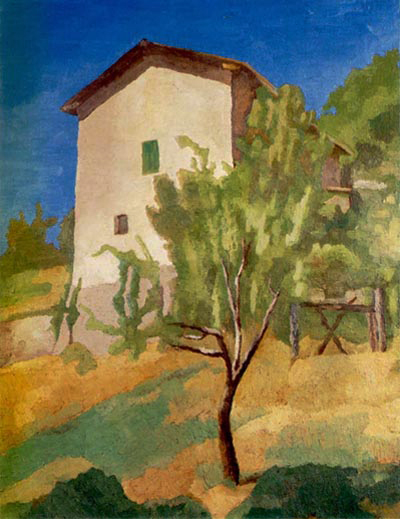This exhibition represented a rare opportunity to see nineteen paintings by Giorgio Morandi (1890-1964), spanning his career from 1914, his early Futurist phase, up to 1957, together with fourteen works by his contemporaries. They are selected from the collection of Augusto and Francesca Giovanardi, who shared a passion for mid-century Italian painting, particularly still lifes and landscapes.
Augusto Giovanardi, a significant figure in hygiene and preventative medicine in Italy, and his wife, Francesca Marzoli, began collecting when they moved to Milan in 1949. Giovanardi acquired his first Morandi on impulse at a charity auction in 1950, drawn both to the art and the artist who was from the same region of Italy.
Today the collection holds the largest and most important group of works by the artist in private hands in the world. Included is a rare ‘futurist’ still life from 1914 which echoes the cubist explorations of Picasso and Braque. The still lifes of 1928 and 1938 painted in warm earth tones depict the serene groupings of jugs, bottles and other household objects for which Morandi is especially known. Paintings from the 1950s show a continuing, but complex fascination with the still life genre. There are also four landscapes, mainly painted around the village of Grizzana, outside Bologna.
Other artists featured in the exhibition were associated with the Novecento movement, which became the official tendency in Italian art during the 1930s, advocating a return to traditional painting values, particularly those which represented Mediterranean traditions, heroic myth and monumental art. Fine examples were included from Massimo Campigli, Carlo Carrà, Filippo de Pisis, Osvaldo Licini and Mario Sironi.
The exhibition was made in association with the Museo di Arte Moderna e Contemporanea of Trento and Rovereto.

See our current exhibitions
Find out more...Discover the programme of future exhibitions
Find out more...Discover our past exhibitions
Find out more...




